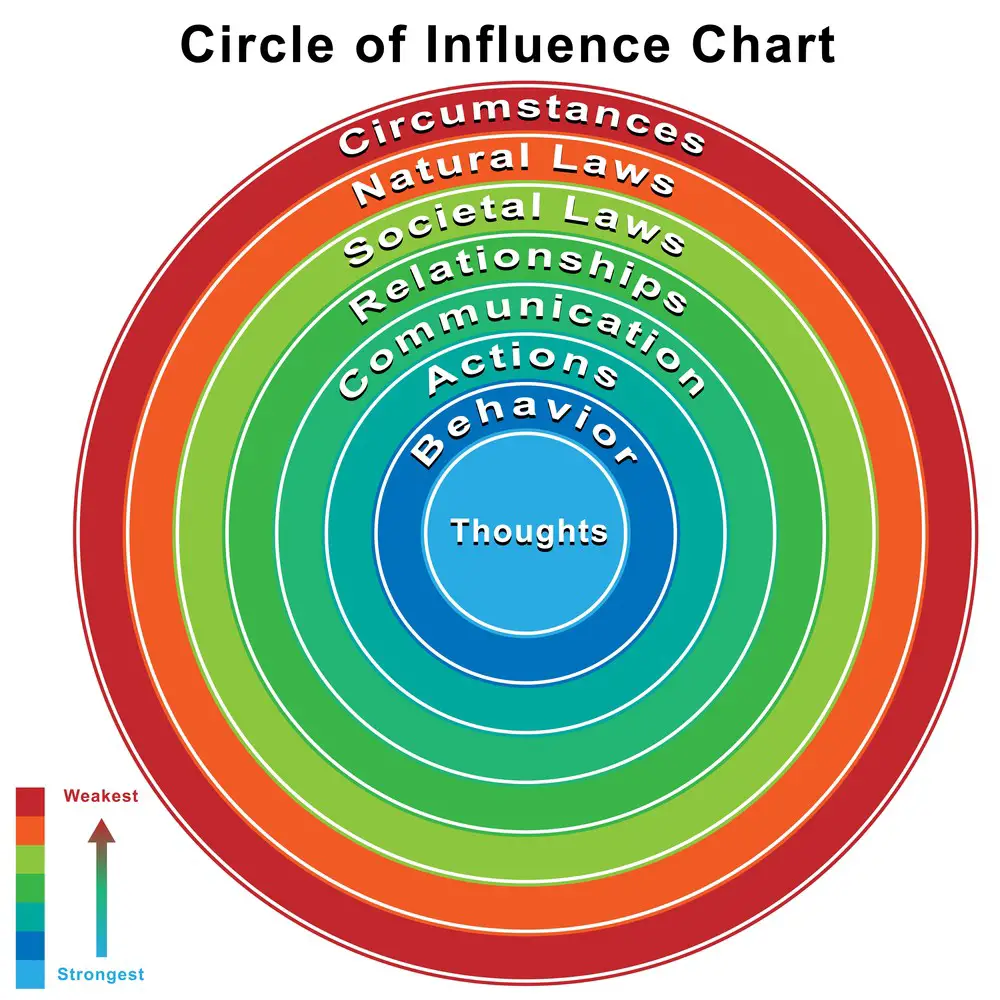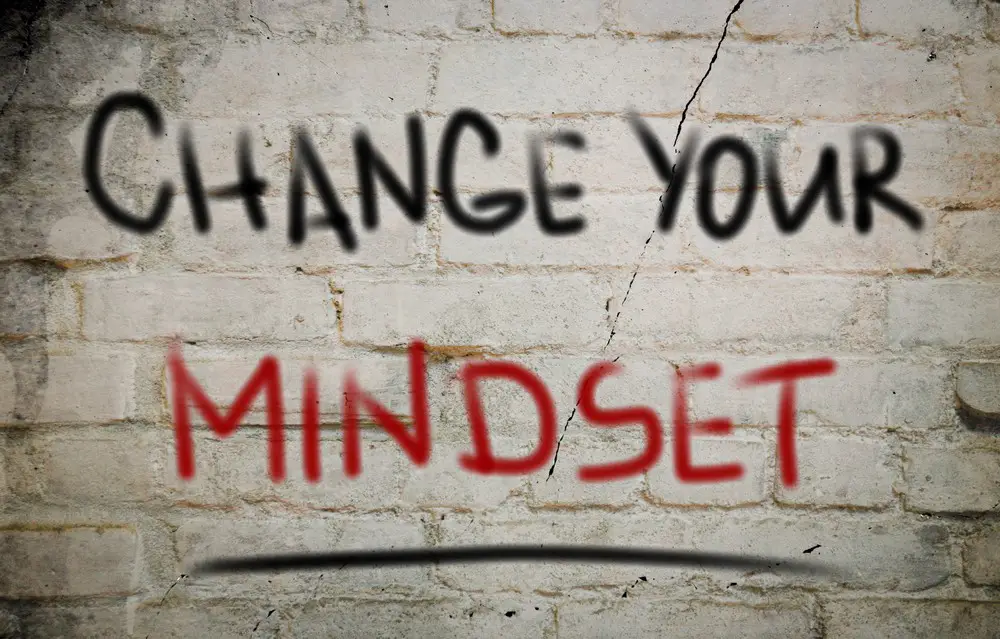As a BetterHelp affiliate, we receive compensation from BetterHelp if you purchase products or services through the links provided
The concept of the Circle of Control is a common topic in the self-help and personal development literature. For example, it is often associated with Stephen Covey’s book, “The 7 Habits of Highly Effective People.” The Circle of Control refers to what an individual can directly control or influence.
The Circle of Control is a visual representation of the idea that individuals should focus their energy and attention on the things they can control rather than worrying about things outside their control. This concept is closely related to the Circle of Concern and the Circle of Influence, which represent the things that an individual is concerned about and the things that they can influence, respectively. Individuals can develop a proactive mindset and take action to improve their lives by focusing on the Circle of Control.
Understanding the Circle of Control

What is the Circle of Control?
The Circle of Control is a concept that refers to the things that individuals have direct control over. It is a model that helps people understand what they can and cannot control. The Circle of Control is often contrasted with the Circle of Concern, which refers to things people are concerned about but have no control over.
The Relationship Between the Circle of Control, Concern, and Influence
While individuals have direct control over the things within their Circle of Control, they may also have indirect control over things outside of it. For example, the Circle of Concern includes things individuals may be concerned about but cannot control. Finally, the Circle of Influence contains things individuals can influence.
How Stephen Covey’s ‘7 Habits of Highly Effective People’ Applies to the Circle of Control
Stephen Covey’s ‘7 Habits of Highly Effective People’ emphasizes the importance of a proactive mindset. Covey argues that individuals should focus on their Circle of Control and work to expand it. He also suggests that individuals should change their attitude and thinking to be more proactive and less reactive. Covey’s book provides practical advice for those looking to take control of their lives.
Overall, the Circle of Control is a powerful concept that can help individuals take control of their lives. Individuals can improve their mental wellness and overall mental health by focusing on what they can control and working to expand their Circle of Control. Practicing gratitude, exercise, sleep, meditation, and prayer can help individuals maintain a proactive mindset and focus on what they can control.
Applying the Circle of Control in Your Life
Identifying Your Circle of Control
The first step in applying the circle of control in your life is to identify what is within and outside your control. This means recognizing the things that you have the power to change and accepting the things that you cannot change.
To identify your circle of control, you can list what you are responsible for and control over, such as your thoughts, actions, and behaviors. You can also make a list of the things that are outside of your control, such as other people’s actions, the weather, or global events.
Prioritizing Your Circle of Control
Once you have identified your circle of control, it is essential to prioritize it. This means focusing your time, energy, and resources on the things that are within your control and that are most important to you.
To prioritize your circle of control, you can create a list of goals and tasks that align with your values and that you have the power to achieve. You can also use a time management system to help you allocate your time and energy effectively.
Developing a Proactive Mindset
A vital aspect of the circle of control is developing a proactive mindset. This means taking responsibility for your life and your choices and focusing on what you can do to improve your situation.
To develop a proactive mindset, you can practice gratitude, meditation, and positive self-talk. You can also focus on your strengths and skills and work on developing new ones.
Managing Strong Emotions
Finally, learning how to manage strong emotions when applying the circle of control is essential. This means recognizing when you feel anxious, stressed, or frustrated and finding healthy ways to cope with these emotions.
You can practice mindfulness, exercise, and deep breathing to manage strong emotions. If needed, you can also seek support from friends, family, or a mental health professional.
By applying the circle of control in your life, you can focus on the things that matter most to you and achieve a more fulfilling life.
Conclusion
In conclusion, the Circle of Control is a powerful tool that can help individuals take control of their lives. By focusing on what they can control and letting go of what they cannot, individuals can reduce stress and anxiety and increase their overall well-being.
The Circle of Control is beneficial when individuals feel overwhelmed or powerless. By identifying what they can control, they can take action and make positive changes in their lives. This can lead to increased confidence and a greater sense of personal agency.
However, it is essential to note that the Circle of Control is not a panacea. There will always be things outside of an individual’s control, and it is essential to acknowledge and accept this fact. Additionally, the Circle of Control should not be used as an excuse to ignore important issues or problems that require attention.
Ultimately, the Circle of Control is a tool that can help individuals take control of their lives and reduce stress and anxiety. Individuals can take positive steps towards a happier and more fulfilling life by focusing on what they can control and letting go of what they cannot.
FAQs
- Breaking the Silence: Why Men’s Mental Health Matters More Than Ever - April 15, 2025
- How to Transform a Home’s Patio Space into a Relaxing Space - March 23, 2025
- 5 Strategies to Use a Cell Phone to Help Manage Your Stress - March 23, 2025
This site contains affiliate links to products. We will receive a commission for purchases made through these links.



